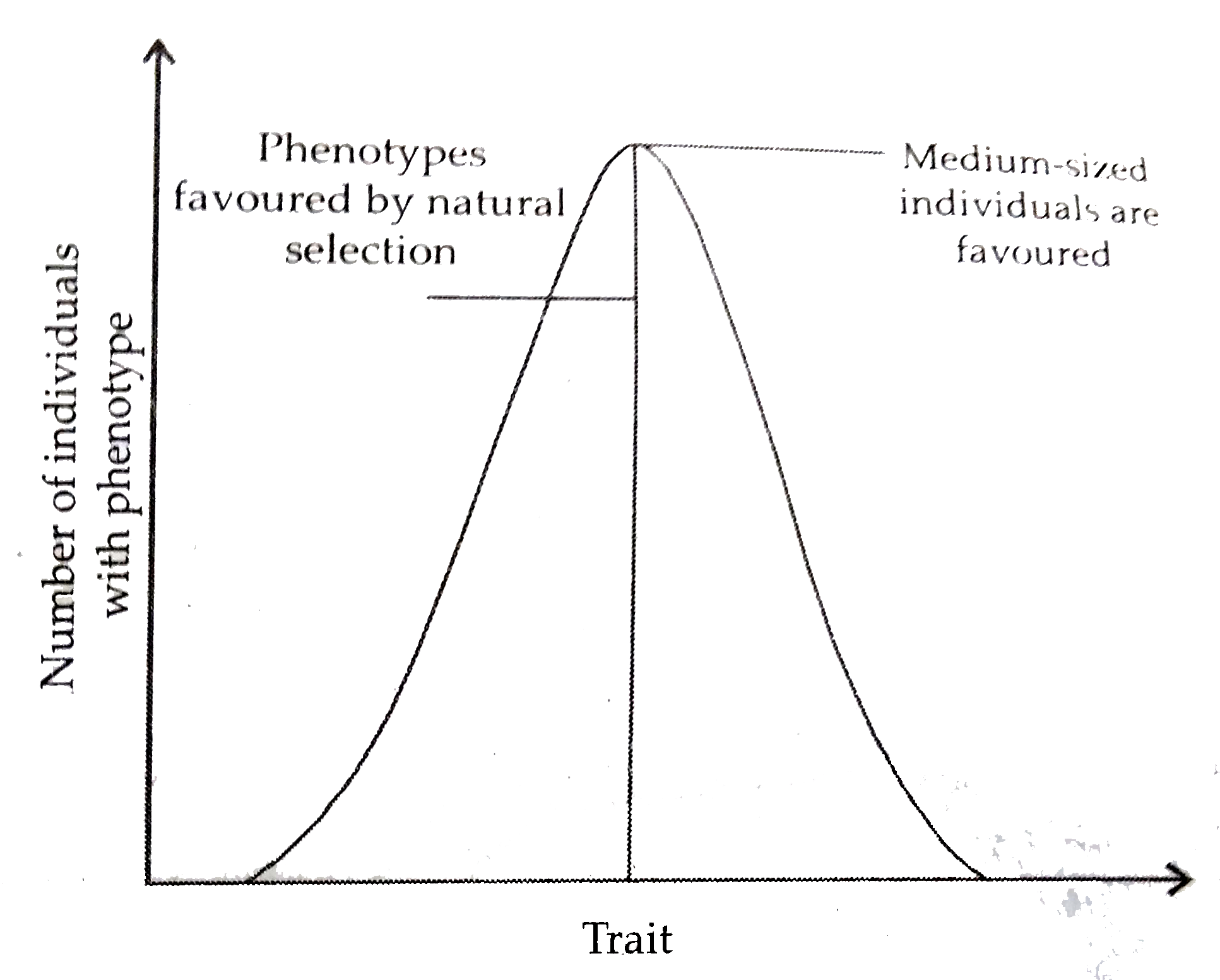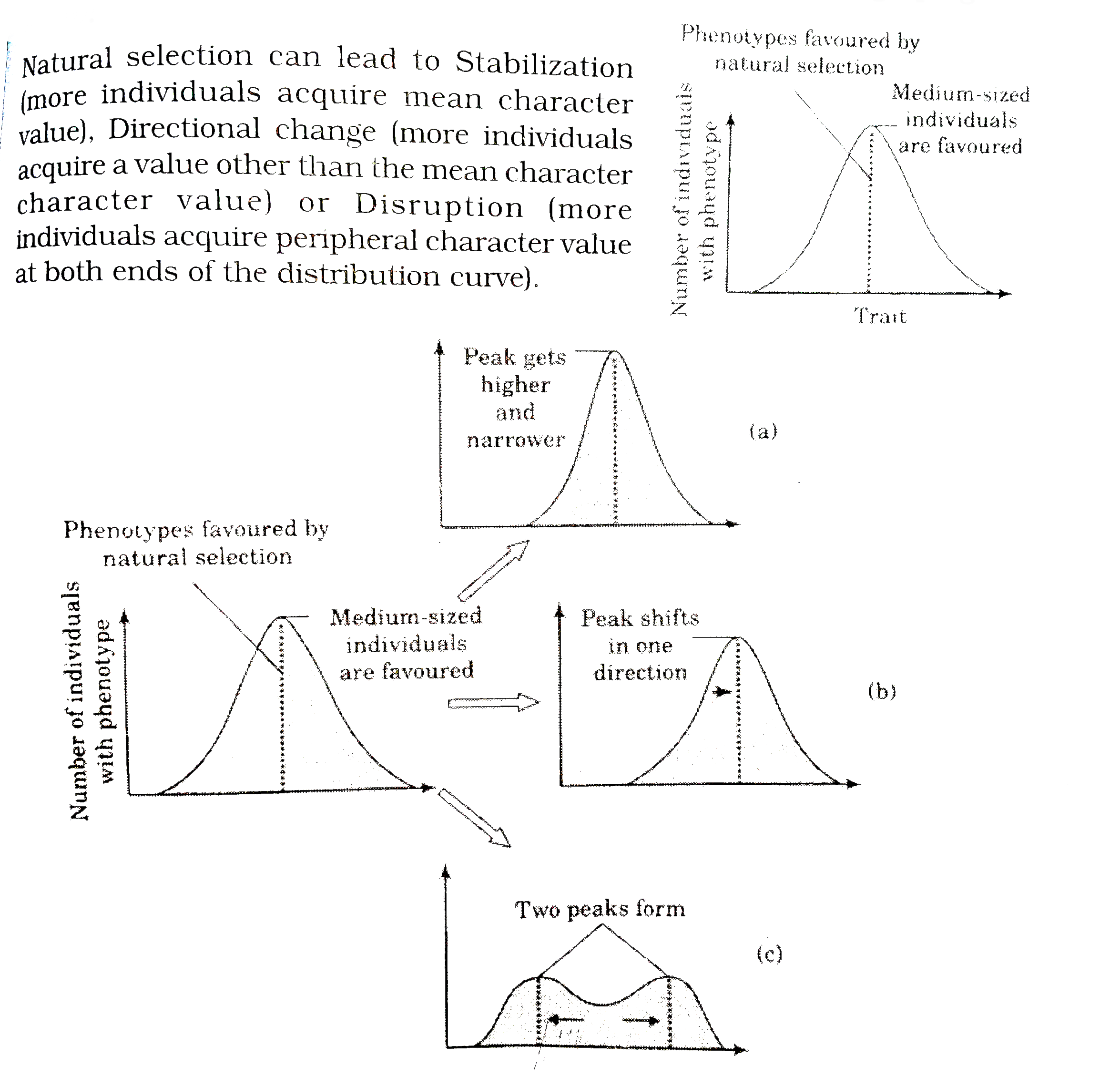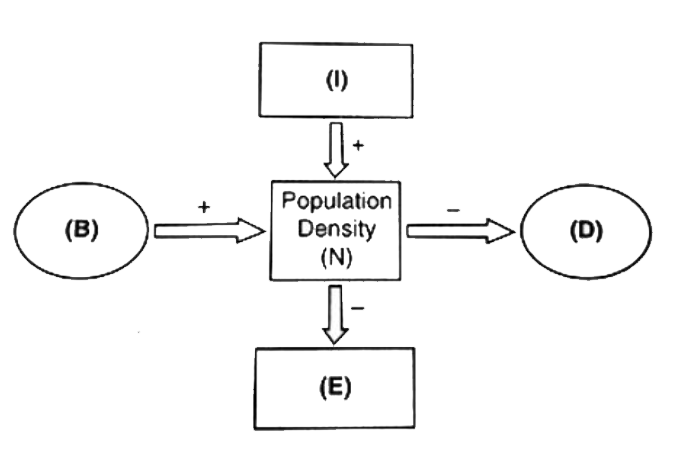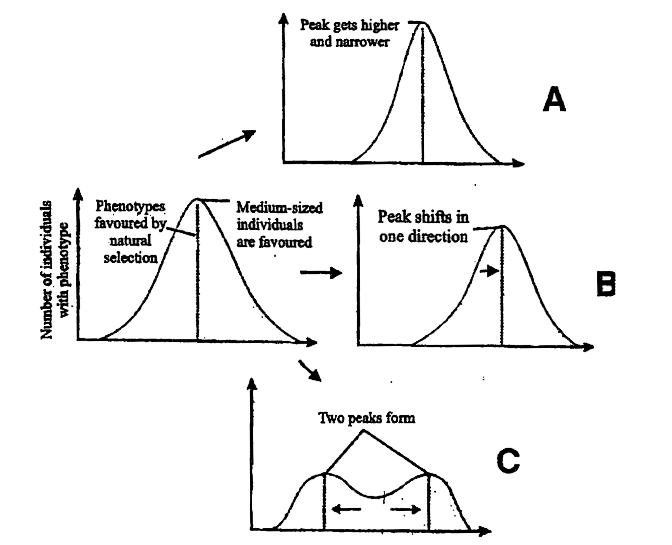(a ) Write the Hardy-Weinberg principle.
(b) Explain the three different ways in which natural selection can affect the frequency of a heritable trait in a population shown in the graph given below.

Natural selection can lead to Stabilization (more individuals acquire mean character individuals value), Directional change (more acquire a value other than the mean character character value) or Disruption (more individuals acquire peripheral character value at both ends of the distribution curve).

Topper's Solved these Questions
- GENETICS AND EVOLUTION BOOK - TRUEMAN BIOLOGYCHAPTER - GENETICS AND EVOLUTION EXERCISE - SECTION-A
34 Videos
- GENETICS AND EVOLUTION BOOK - TRUEMAN BIOLOGYCHAPTER - GENETICS AND EVOLUTION EXERCISE - SECTION-C
45 Videos
- GeneticsBOOK - TRUEMAN BIOLOGYCHAPTER - GeneticsEXERCISE - ASSERTION AND REASON
123 Videos
- HUMAN HEALTH AND DISEASEBOOK - TRUEMAN BIOLOGYCHAPTER - HUMAN HEALTH AND DISEASEEXERCISE - MULTIPLE CHOICE QUESTIONS
213 Videos
Similar Questions
(a) State Hardy Weinberg principle. Name any two factors which affect it.
(b) Draw a graph to show that natural selection leads to directional change.
View SolutionHow can the long neck of giraffe be explained through the principle of natural selection ? How does it differ from the Lamarckian interpretation ?
View Solution
Knowledge Check
Different factors affecting population density are given below. I,B,D and E represent:
 AEmigration, immigration, natality, mortalityBImmigration , natality, mortality, emigrationCImmigration, mortality, natality, emigrationDImmigration, natality, emigration, mortality
AEmigration, immigration, natality, mortalityBImmigration , natality, mortality, emigrationCImmigration, mortality, natality, emigrationDImmigration, natality, emigration, mortalityDifferent factors affecting population density are given below . I ,B ,D and E represent :
 AI-Emigration , B-immigration , D-Natality , E-MortalityBI-Immigration , B-Natality , D-Mortality , E - EmigrationCI-Immigration, B-Mortality , D-Natality , E-EmigrationDI-Immigration, , B-Natality , D--Emigration, E-Mortality
AI-Emigration , B-immigration , D-Natality , E-MortalityBI-Immigration , B-Natality , D-Mortality , E - EmigrationCI-Immigration, B-Mortality , D-Natality , E-EmigrationDI-Immigration, , B-Natality , D--Emigration, E-MortalityAssertion : Hardy-Weinberg principle states that in the absence of disturbing influences, gene frequencies of large populations of sexually reproducing organisms do not change , provided that matings occur at random.
Reason : The disturbing influences include mutation, gene flow genetic drift, genetic recombination and natural selection.AIf both assertion and reason are true and the reason is a correct explanation of the assertion.BIf both assertion and reason are true and the reason is not correct explanation of the assertion.CIf the assertion is true but reason is falseDIf both the assertion and reason are false.
With the help of an algebric equation, how did Hardy-Weinberg explain that in a given population the frequency of occurrence of alleles of a gene is supposed to remain the same through generations ?
View SolutionAccording to Hardy-Weinberg principle, allele and genotype frequencies in a population will remain constant from generation to generation in the absence of other evolutionary influences. It makes several assumptions which were given below.
i. Random Mating
ii. Sexual Reproduction
iii. Non-overlapping Generations
iv. Occurrence of Natural Selection
v. Small size of population.
Identify two assumptions which do not meet for a population to reach Hardy-Weinberg Equilibrium?
View SolutionAccording to Hardy-Weinberg principle, allele and genotype frequencies in a population will remain constant from generation to generation in the absence of other evolutionary influences. It makes several assumption which were given below
i. Random Mating
ii. Sexual Reproduction
iii. Non-overlapping Generations
iv. Occurrence of Natural Selection
v. Small size of population
Identify two assumptions which do not meet for a population of reach Hardy-Weinberg Equilibrium ?
View SolutionFollowing diagrammatic representation refers the natural selection on different traits. In which all the three graphs A, B and C are identified correctly -

View SolutionThere are 10 different books in a shelf. The number of ways in which three books can be selected so that exactly two of them are consecutive is
View Solution
